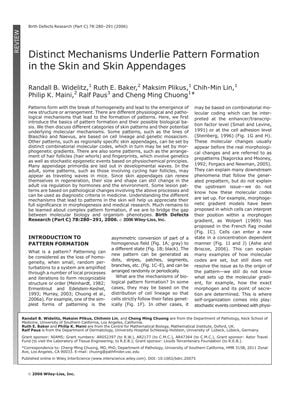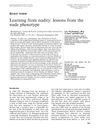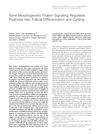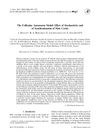Distinct Mechanisms Underlie Pattern Formation in the Skin and Skin Appendages
September 2006
in “
Birth Defects Research
”

TLDR Different processes create patterns in skin and things like hair and feathers.
The document from 2006 reviews the mechanisms behind pattern formation in the skin and its appendages, such as hair follicles and feathers. It explains that these patterns can result from genetic, molecular, and environmental factors, including genetic mosaicism, morphogenetic gradients, and hormonal regulation. The review also discusses the role of Hox genes in skin regional specificity and the influence of epigenetic factors on patterns like fingerprints and animal pigmentation. It highlights the importance of epithelial-mesenchymal interactions and the concept of morphogenetic gradients, using Wnt 3a in feather follicles as an example. Additionally, the document describes the cyclic alopecia phenomenon in mice and the independent hair follicle cycles in humans, noting the influence of sex hormones on skin appendages during puberty and the potential reversal of these changes, leading to conditions like androgenic alopecia. Environmental factors such as light/dark cycles and temperature changes are also mentioned as influencers of skin patterns. The authors suggest that understanding these complex pattern formations is key to bridging molecular biology with organism phenotypes and that patterns can change through regeneration and organ growth during development.











